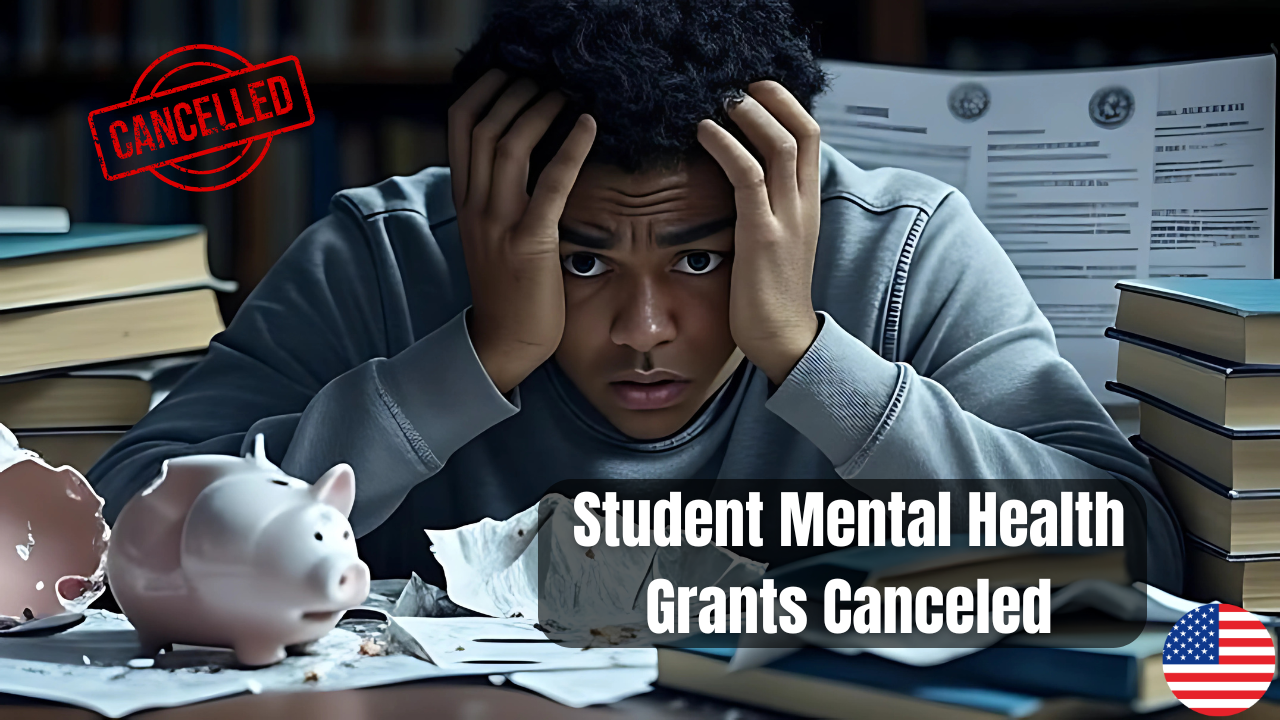Schools across America woke up to shocking news this week. The Trump administration decided to pull the plug on a massive $1 billion mental health program. This decision affects thousands of schools that were counting on federal money to hire counselors and psychologists.
The grants came from the Bipartisan Safer Communities Act, passed after the tragic Uvalde shooting in 2022. Lawmakers from both parties agreed that students needed more mental health support in schools. Now, that bipartisan effort faces an abrupt ending under the new administration.
Understanding the Original Mental Health Initiative
What the Grants Were Supposed to Do
The federal program aimed to double the number of school-based mental health professionals. Districts used the money to hire social workers, counselors, and psychologists. Many rural areas especially benefited from this funding boost.
Schools were struggling with a mental health crisis among students. The COVID-19 pandemic made things worse, leaving many kids without proper support. These grants offered hope for addressing long-standing problems in student mental health services.
How Schools Used the Federal Money
Many districts hired their first full-time mental health staff with these grants. Some schools went from having two counselors to seven or eight professionals. The difference was immediately noticeable in student behavior and academic performance.
One Oregon district used the money to hire five trained social workers. Before the grants, they barely had enough staff to handle crisis situations. The additional support allowed them to focus on prevention rather than just emergency response.
The Administration’s Reasoning Behind the Cuts
Claims of Civil Rights Violations
The Department of Education says the grants violated federal civil rights laws. Officials argue that some schools used diversity goals when hiring mental health workers. They claim this approach discriminates against certain groups.
Conservative activist Christopher Rufo first publicized the cuts on social media. He shared examples from grant applications that mentioned hiring goals for counselors from diverse backgrounds. The administration used these examples to justify ending the entire program.
DEI Concerns Drive Decision
The Trump team believes the grants promoted diversity, equity, and inclusion (DEI) programs inappropriately. They argue that any hiring based on race or ethnicity amounts to discrimination. This philosophy drives their broader effort to eliminate DEI initiatives across federal programs.
Education officials pointed to specific language in grant applications as problematic. Some districts mentioned training counselors to address racial trauma or systemic injustices. The administration viewed these approaches as inappropriate for federally funded programs.
Real-World Impact on Schools and Students
Immediate Consequences for Districts
School districts now face difficult decisions about their mental health staff. Many professionals hired through these grants will likely lose their jobs by December. This creates a crisis for schools that were already understaffed.
Derek Fialkiewicz, a superintendent in Oregon, expressed shock at the sudden cuts. His district had just received approval to add telehealth services for students. Now they must figure out how to maintain their expanded mental health team without federal support.
Students Bear the Heaviest Burden
The cuts affect the most vulnerable students first. Many kids rely on school counselors as their only mental health resource. Low-income families often cannot afford private therapy or counseling services.
Research shows that students of color particularly benefit from diverse mental health staff. They’re more likely to seek help from counselors who share their background or understand their experiences. The loss of these programs could widen existing gaps in mental health support.
The Broader Pattern of Federal Funding Cuts
Beyond School Mental Health
The school grants represent just one part of massive federal cuts. The administration also terminated $11.4 billion in COVID-era health grants nationwide. These included addiction treatment programs and community mental health services.
State health departments across the country lost funding for disease outbreak investigations. Mental health clinics face closure as their federal support disappears. The cuts affect both urban and rural communities that depend on federal health programs.
States Scramble for Solutions
New York Governor Kathy Hochul called the cuts devastating during an ongoing mental health crisis. She pointed out that no state has enough money to replace the massive federal funding losses. Colorado officials worry about 60 different programs that could be affected.
Many states built their mental health infrastructure around federal grants. Without this support, they must either raise taxes or eliminate services. Most states lack the budget flexibility to maintain current service levels.
Professional Community Responds
Mental Health Advocates Speak Out
The National Association of School Psychologists warns of tremendous domino effects from these cuts. They worry about the pipeline for training new mental health professionals. Graduate programs that relied on grant funding might shut down entirely.
Kelly Vaillancourt Strobach, a policy director for school psychologists, emphasizes the long-term consequences. Fewer training programs mean fewer qualified professionals in the future. This could worsen the existing shortage of school mental health workers.
Bipartisan Origins Forgotten
Many professionals point out that these grants had bipartisan support originally. Republicans and Democrats agreed on the need for more school mental health services after mass shootings. The current cuts ignore this rare moment of political unity.
Gun control remains divisive, but mental health support seemed like common ground. The administration’s decision to eliminate these programs surprises even some conservative education experts. They question whether the cure is worse than the disease.
Administration’s Alternative Plans
The Department of Education promises to “re-envision” mental health funding programs. They claim they’ll find more effective ways to support student behavioral health needs. However, they haven’t provided specific details about replacement programs.
Officials say they want to prioritize merit and fairness in future grant programs. This likely means eliminating any diversity considerations in hiring or training requirements. The focus will shift to purely academic or professional qualifications.
Timeline for Changes
Current grants will expire at the end of December 2025. Schools have until then to find alternative funding sources or make staff cuts. Some districts might appeal the decision, but success seems unlikely given the administration’s firm stance.
The Department plans to launch new grant competitions sometime in 2026. These programs will reflect the administration’s priorities rather than the previous approach. Schools must adapt to entirely different requirements and expectations.
Economic and Social Implications
Cost of Mental Health Crisis
Studies show that untreated mental health problems cost schools billions in lost learning time. Students with mental health issues have higher dropout rates and lower academic achievement. The short-term savings from grant cuts might create larger long-term costs.
Emergency room visits for mental health crises could increase without school-based support. This shifts costs from prevention to crisis intervention, which is typically more expensive. Families and communities will bear these increased costs directly.
Regional Variations in Impact
Rural areas will suffer most from these cuts. They already struggle to attract mental health professionals due to lower pay and limited resources. Federal grants helped level the playing field by covering salaries and training costs.
Urban districts have more resources to replace federal funding, though it won’t be easy. Wealthy suburbs might maintain their programs through local tax increases. This creates a growing disparity in mental health support based on community wealth.
Frequently Asked Questions
When do the mental health grant cuts take effect?
The cuts become effective at the end of December 2025.
How much money is being cut from school mental health programs?
Approximately $1 billion in federal grants will be eliminated.
What was the original purpose of these grants?
The grants were designed to help schools hire more counselors, psychologists, and social workers.
Why is the administration cutting these programs? Officials claim the grants violated civil rights laws and promoted inappropriate diversity policies.
Will there be replacement programs?
The Department of Education promises to create new mental health programs with different requirements.
Which law created these grants originally?
The Bipartisan Safer Communities Act of 2022 established the funding after the Uvalde school shooting.
Can schools appeal these cuts?
Schools can appeal, but the administration seems firm in its decision to end the programs.
What happens to staff hired through these grants?
Many mental health professionals will likely lose their jobs unless schools find alternative funding.
How many students are affected by these cuts ?
The exact number isn’t clear, but thousands of schools nationwide used these grants.
Are other mental health programs being cut too?
Yes, the administration has cut billions in health-related grants beyond just school programs.
The elimination of these mental health grants represents a significant shift in federal education policy. Schools, students, and families must now navigate this new reality while waiting to see what replacement programs might emerge. The long-term effects on student mental health and academic achievement remain to be seen.

